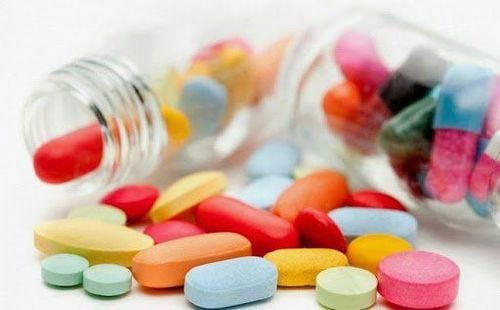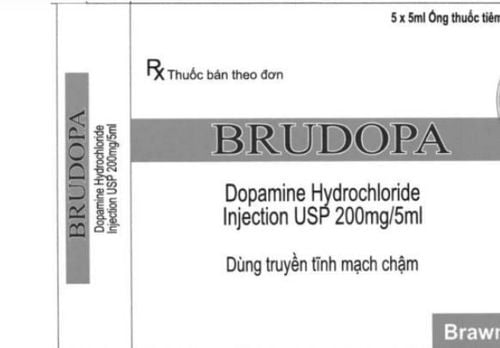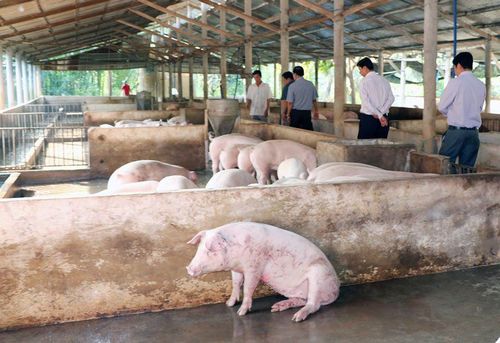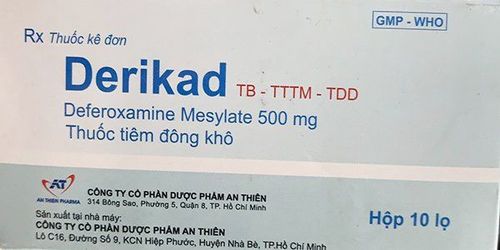This is an automatically translated article.
The article was professionally consulted by Specialist Doctor I Dong Xuan Ha - Gastrointestinal Endoscopy - Department of Medical Examination and Internal Medicine - Vinmec Ha Long International Hospital.Cholera is an infectious disease caused by bacteria. The disease is likely to break out into a large epidemic, especially in areas with poor hygiene awareness or eating habits of raw, fermented foods...
1. What is cholera?
Cholera is an acute infectious disease of the gastrointestinal tract caused by the bacterium Vibrio cholerae. Symptoms of cholera are mainly vomiting and diarrhea in large quantities, which easily leads to severe dehydration and electrolyte loss, causing severe shock. If the patient is not treated in time, it can lead to death.In the past, cholera caused major pandemics, killing millions of people. Currently, cholera has been controlled in many places, but outbreaks still occur in African countries and some Asian countries. Cholera still occurs in Vietnam, but most of the time it is just a case of sporadic cases, usually in the summer in coastal provinces.
2. Causes of cholera in humans
Vibrio cholerae is a bacterium that causes cholera in humans, it has a comma-shaped curved shape, is a gram-negative bacterium, has the ability to move quickly thanks to a hair, they grow well in a nutrient-rich environment. alkaline field (pH > 7). In a suitable environment such as in water, food, in the body of marine animals (fish, crabs, shellfish...) ... especially in cold temperatures, cholera bacteria can live for a few days. days to 2-3 weeks. Cholera bacteria can be killed at temperature (80°C/5 minutes), common bactericidal chemicals and acidic environment.Vibrio cholerae produces enterotoxin LT (thermolabile toxin), this enterotoxin attaches to the mucosa of the small intestine of humans, activates the enzyme Adenylcyclase leading to increased cyclic AMP, decreased absorption of Na+ ions, increased secretion of Cl- ions. water, causing acute diarrhea.
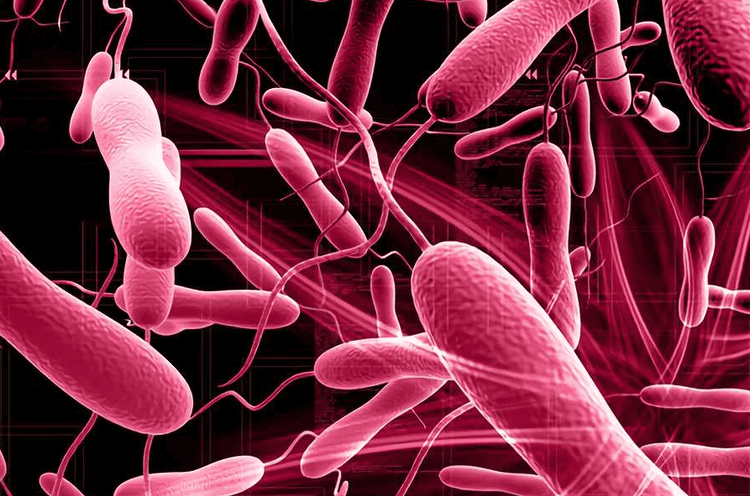
3. Diagnosis of cholera in humans
3.1. Diagnosis is based on clinical signs
Incubation period: Cholera incubation lasts from a few hours to 5 days.Period of onset: cholera symptoms are mainly abdominal bloating, abdominal bloating, and diarrhea several times.
Full-blown period:
Cholera in humans causes continuous diarrhea, many times with large bowel movements, sometimes tens of liters of feces a day. The stool characteristics in typical cholera are only water, opaque white like rice water, no blood mucus is visible. Vomiting easily, first vomiting food, later vomiting water. Patients with cholera usually do not have fever, rarely abdominal pain. The most dangerous condition for cholera is dehydration and electrolytes causing fatigue, cramps... Recovery period: cholera in humans usually develops from 1 to 3 days if adequate rehydration and antiretroviral therapy is provided. suitable birth.
3.2. Degrees of dehydration
| Các dấu hiệu | Mất nước độ 1 | Mất nước độ 2 | Mất nước độ 3 |
|---|---|---|---|
| Khát nước | Ít | Vừa | Nhiều |
| Tình trạng da | Bình thường | Khô | Nhăn nheo, mất đàn hồi da, mắt trũng |
| Mạch | < 100 lần/phút | Nhanh nhỏ (100-120 lần/phút) | Rất nhanh, khó bắt (> 120 lần/phút) |
| Huyết áp | Bình thường | < 90 mmHg | Rất thấp, có khi không đo được |
| Nước tiểu | Ít | Thiểu niệu | Vô niệu |
| Tay chân lạnh | Bình thường | Tay chân lạnh | Lạnh toàn thân |
| Lượng nước mất | 5-6% trọng lượng cơ thể | 7-9% trọng lượng cơ thể | Từ 10% trọng lượng cơ thể trở lên |
3.3. Diagnosis is based on clinical tests
Fecal examination: help doctors diagnose quickly. Stool examination under a black background microscope will show strong motile cholera bacteria in the stool, Gram staining shows a non-Gram-staining bacteria. Stool culture: stools should be collected as early as the first symptom of diarrhea and before antibiotic treatment. Inoculation of feces into a specialized medium: cholera bacteria will grow very quickly and can be identified after 24 hours of inoculation. PCR technique to find CTX gene: helps to diagnose cholera quickly (if possible). Concentration of blood: Hematocrit is increased. Electrolyte disorders: decreased potassium, decreased bicarbonate, low pH. Renal failure: blood urea and creatinine levels increase in severe cases of cholera.
4. Human cholera forms
Cholera has no symptoms. Mild form: cholera resembles common diarrhea. Typical form: cholera has an acute course as described above. Fulminant form: cholera develops rapidly, each time diarrhea loses a lot of water, anuria (no urine), rapid exhaustion of the whole body after a few hours of diarrhea and possibly death due to cardiovascular collapse. Cholera in children: common is a mild form like common diarrhea. In older children, diarrhea and vomiting occur as in adults, often accompanied by low-grade fever. Cholera in the elderly: often complications of renal failure despite adequate fluid resuscitation.5. Principles of treatment of cholera in humans
Isolate patients infected with cholera. Replenish water and electrolytes quickly and fully. Use antibiotics to kill bacteria.6. Specific Cholera Treatment
6.1. Supplemental water and electrolytes orally
Applicable for mild cases, early stage (not much water loss) and recovery stage. Rehydration can be done at home or in medical facilities. Types of oral rehydration solutions: Oresol (including 3.5g NaCl, 2.5g NaHCO3, 1.5g KCl and 20g glucose) mixed with 1 liter of boiled and cooled water; make a replacement solution (8 teaspoons of sugar, 1 teaspoon of salt in 1 liter of water); porridge (including 50g of rice and a 3.5g of salt); Young coconut water mixed with a pinch of salt... For the patient to drink as needed, if the patient vomits a lot, take small sips.6.2. Rehydration with electrolytes by intravenous line
Total volume of fluids per day = A + B + MA: amount of fluid lost before reaching the hospital (based on the degree of dehydration). B: The amount of stool and vomit continues to disappear during hospital stay. M: amount of water maintained during the day.
6.3. Types of fluids commonly used
Sodium chloride 0.9% or Ringer lactate solution (4 parts) Sodium bicarbonate 1.4% (1 part) Glucose 5% (1 part) Add potassium chloride (KCl): each 1 liter of infusion solution add 1g KCl. When the patient can drink, replace it with oral.6.4. Antibiotic treatment
The fluoroquinolone group (Ciprofloxacin 1g/day, Norfloxacin 800mg/day, Ofloxacin 400mg/day) orally divided into 2 times/day for 3 days. Do not use for children under 12 years old, pregnant and lactating women, caution when used with children from 12-18 years old. Azithromycin: 10 mg/kg/day, orally for 3 days, can be used for children < 12 years old, pregnant and lactating women. Chloramphenicol: 30mg/kg/day, divided orally 3 times/day, used for 3 days. If the above drugs are not available, use:Erythromycin 1g/day, orally divided into 4 times/day (children 40 mg/kg/day), use for 3 days Or Doxycyclin 300mg orally 1 dose (in case the bacteria are still sensitive). ). Do not use drugs that reduce intestinal motility to stop diarrhea such as: morphine, opizoic, atropin, loperamide...
7. Classification of patients for treatment
| Loại | Các triệu chứng chính | Phương pháp điều trị |
|---|---|---|
| I |
- Tiêu chảy vài lần, phân ít, nhão - Không nôn - Mạch, huyết áp bình thường, chưa có dấu hiệu mất nước |
- Uống kháng sinh - Uống dung dịch Oresol |
| II |
- Tiêu chảy nhiều nhưng tự chủ được - Không nôn tự nhiên - Mất nước nhẹ - Mạch, huyết áp bình thường |
- Uống kháng sinh - Uống dung dịch Oresol - Truyền dịch |
| III |
- Tiêu chảy nhiều - Nôn dễ dàng - Có triệu chứng mất nước trung bình - Huyết áp hơi hạ - Mạch nhanh, yếu - Mệt lả |
- Truyền dịch là chính. Nếu mạch và huyết áp trở về bình thường, bài niệu tốt, còn tiêu chảy nhẹ cần duy trì bằng dung dịch uống (ORS) - Uống kháng sinh |
| IV |
- Tiêu chảy và nôn nhiều gây nên mất nước nặng, thiểu niệu hoặc vô niệu - Trụy mạch: Huyết áp không đo được, mạch nhỏ khó bắt |
- Truyền dịch với tốc độ nhanh - Theo dõi mạch, huyết áp, lượng nước tiểu, áp lực tĩnh mạch trung tâm - Uống kháng sinh |
8. Hospital discharge criteria
The patient's diarrhea is gone. General condition is stable. The stool culture test results were negative 3 times in a row after the clinical symptoms stabilized. In medical facilities that do not have the conditions to perform stool cultures, patients are discharged from the hospital after being clinically stable for 1 week.9. Measures to prevent cholera in humans
Environmental sanitation: ensure the use of clean water. Food hygiene: eat cooked, drink boiled, should not eat raw seafood, raw shrimp paste because cholera sources can exist inside and spread the disease. Use oral cholera vaccine in areas with high cholera risk as directed by preventive health authorities.Please dial HOTLINE for more information or register for an appointment HERE. Download MyVinmec app to make appointments faster and to manage your bookings easily.






